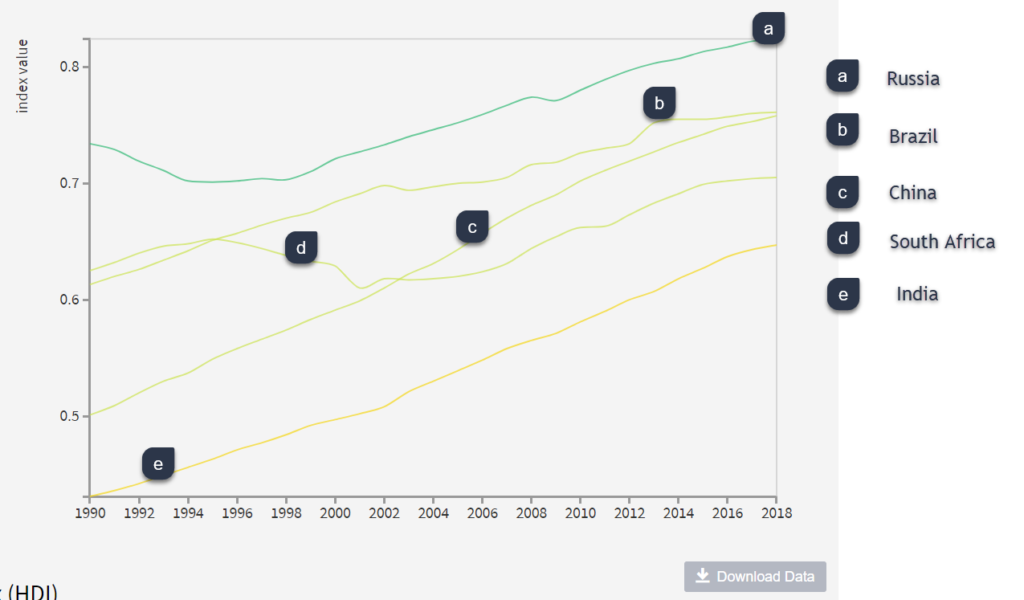Inequality can be reduced
, via Wikimedia Commons “]Brazil has a remarkable achievement, as it has reduced inequality over the last decade, as shown in the chart below. The exact reasons for the reduction in inequality is hotly debates in Brazil, as are the methods of calculating inequality. There are sceptics on this outcome, and those praising this achievement. Just so that we are clear – Brazil remains a very unequal society. South Africa has however become more unequal, and this fact is not disputed with official development indicators broadly agreeing with this finding. The chart below shows data from The World Bank for the Gini Coefficient. We have selected the BRICS countries to represent here, but the focus is Brazil and South Africa. It suggests that over a short period of time, inequality can be reduced, in an environment which reduces poverty and increases jobs. (I have added a note to the editorial calendar for Zapreneur, as it would be informative to better understand the reasons behind the outcomes.)
Lulismo
One debate that is emerging on explaining Brazil’s outcomes is occurring under the moniker “Lulismo”. The word derives from the name of President Lula, and seeks to explain the choices that were made by Brazil during that period. It however also suggests that there might be doubts of future leaders being able to replicate the gains capable under a leader, like President Lula. The debate however is largely conducted in Portuguese, which means that the textures and nuances of the debate cannot be fully comprehended by someone that does not speak Portuguese.
The features of the debate that we could glean ask a couple of demanding questions:
- Is the reduction of inequality a small victory for moving a leftist programme to the centre? The suggestion being that a more egalitarian outcome could have been achievable.
- Are the results simply derived from a commodity boom and will prove short-lived in an economic downturn?
- Are Brazil outcomes rather the product of a longer run reform programme, which included neo-liberal restructuring under previous administrations?
- Are the Brazilian outcomes the result of a developmental state, which saw the Workers Party (PT) introduce social and economic measures that are the cornerstone of the success?
The debate seems furious and polarised. The underlying question is one that South Africa would love to have -Why has our society become more equal, and can we sustain it over the longer term?
Read more
